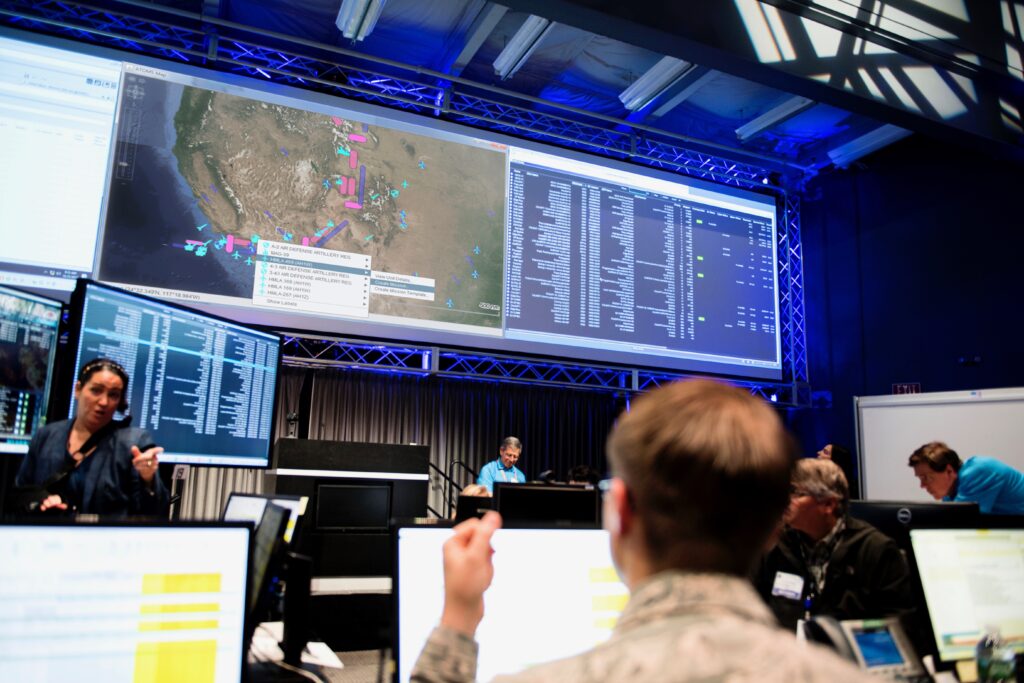By COLIN CLARK
 SUFFOLK, VA: Multi-domain command and control, one of the most important efforts the Pentagon is pursuing, is getting plumbed again by Lockheed Martin at its fourth wargame this week where the company will be testing four systems it believes can fuse data from sensors around the world and allow rapid communications to troops. “Integrated teams” of air, space, and cyber experts representing the transparently named country of “Pacifica” will be planning missions and creating kinetic and non-kinetic effects. That’s a major shift from the war game I attend a year ago, when separate groups of space, cyber and air tried to work together through a command and control unit.
SUFFOLK, VA: Multi-domain command and control, one of the most important efforts the Pentagon is pursuing, is getting plumbed again by Lockheed Martin at its fourth wargame this week where the company will be testing four systems it believes can fuse data from sensors around the world and allow rapid communications to troops. “Integrated teams” of air, space, and cyber experts representing the transparently named country of “Pacifica” will be planning missions and creating kinetic and non-kinetic effects. That’s a major shift from the war game I attend a year ago, when separate groups of space, cyber and air tried to work together through a command and control unit.
As Breaking D readers may remember, it didn’t work quite as planned. During the war game, the organizers separated the air, cyber and space teams, forcing them to communicate directly with the MDC2 leaders. While central coordination was necessary, so was close consultation between those managing both the conventional attacks and the silent strikes using cyber, electronic warfare and satellites as weapons. Hence the change.
Here’a a quick summary of the systems Lockheed will be putting through their paces.
Common Mission Software Baseline (CMSB): An open systems architecture, CMSB is a cluster of automated decision aids that link operational planning to tactical execution — in a multi-domain context. Most interestingly, it reaches all the way down to the tactical level and includes tactical decision aides and tools.
Cyber Attack Network Simulator (CANS): This is an internal Lockheed system that simulates cyber-attacks over a network. After all, you don’t want Lockheed networks crashing when the teams launch a simulated attack.
iSpace Command and Control System: This is pretty much self-explanatory. It provides what Lockheed calls “comprehensive Space Situation Awareness (SSA).” It uses intelligent sensor tasking, space event detection, assessment and recommends a response based on orbital mechanics.
Multi-Domain Synchronized Effects Tool (MDSET): This generates multi-domain mission packages to attack targets using both kinetic and non-kinetic means.
Air Tasking Order Management System (ATOMS): It can use commercial mapping applications and its open architecture allows outside developers to create new functions quickly. It’s being used instead of TBMCS, which was used last August at the game I attended.
No comments:
Post a Comment